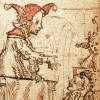 |
The Andreas CenterHome | About Us | Contact Us |
|
The Canon: Thoughts on the First-Generation Christian Literature 5. The Literature That Appeared in the First CenturyFrom the Day of Pentecost, jump ahead some seventy years to the close of the first century. The first-generation Christians have died. The second generation still possesses the events of the gospel and the literature of Israel. But now it has a third thing: a small body of literature left behind by the first generation of Christians. This literature consisted of the following documents: Letters of the Apostle Paul. These are the oldest surviving Christian documents, written even before the Gospels. They appeared during a period of fifteen years, roughly between A.D. 50 and 65. They were a missionary’s letters, sometimes answering questions that had been sent to him and sometimes dealing with ideas that had arisen with which he could not agree. Occasionally these letters preserve elements of teaching and liturgy older than Paul (e.g., 1 Cor. 11:23–25; 15:3–5; Phil. 2:6–11). The Books of Matthew, Mark, Luke, and John. These four books present the gospel in an extended way. They tell of Jesus’ public ministry and his death and resurrection, with varying amounts of his teaching and other narratives. Even a casual reading of the Gospels shows that Matthew, Mark, and Luke are more like each other than any of them are like John. This indicates some kind of literary relationship among them—that a later writer knows the work of an earlier one—as well as their reliance on the oral teaching that preceded all three. If, as is likely, other written accounts preceded these four that survive, their similarities may be further accounted for by mutual reliance on these. The case for this seems especially strong for Matthew and Luke’s use of a document not used by Mark. The Book of John follows the same historical outline as the first three, but gives more extended treatment to a smaller number of incidents. It gives the impression of being the same essential story filled out with the personal reminiscences of a close companion of Jesus. The Book of Acts is an organic unity with the Gospel of Luke. The two books were originally published as a single two-volume work. The manuscript tradition, however, separated them and transmitted Luke as a book of the Euangelion and Acts as a separate volume, in which there was also room for the little documents known as the Catholic Epistles. In manuscripts containing both the Gospels and Acts, Luke and Acts were still separated. The Book of Revelation appeared at the close of the century. It was written on the Island of Patmos, and was published in western Asia Minor as copies were delivered to the churches in Ephesus, Smyrna, Pergamum, Thyatira, Sardis, Philadelphia, and Laodicea. Miscellaneous small documents and letters: James, Jude, Letters of Peter, Letters of John. Besides these, three other documents may plausibly be viewed as coming from the first century: 1 Clement. It is called 1 Clement, but it really ought to be thought of as a letter from the elders of the church in Rome to the church in Corinth. It tries to restore peace to a church in conflict and dates from the late first century, when Clement was an elder of the church in Rome (ca. 88–ca. 97). The Didache. A kind of church manual containing moral teachings and instructions about baptism and communion. It is unclear when the book was written: perhaps in the first century, perhaps in the second. Barnabas. In this book the author goes his own way in interpreting the Old Testament and in showing that Christians are the true covenant people. A date at the end of the first century is possible, although the book is usually placed a little later. Not everything from the first century is from the first generation. Clement clearly is not, and Barnabas was not written by the Barnabas mentioned in Acts as a companion of Paul. The Didache might have some old things in it, but even so, church manuals, like office manuals, are in a constant state of revision and this one did not remain in service very long.
Previous | Table of Contents | Next
|
The Apostle Paul. The container to the left contains scrolls. Fourth century. Catacomb of Domitilla, Rome. |
|
Home | About Us | Contact Us |
|
